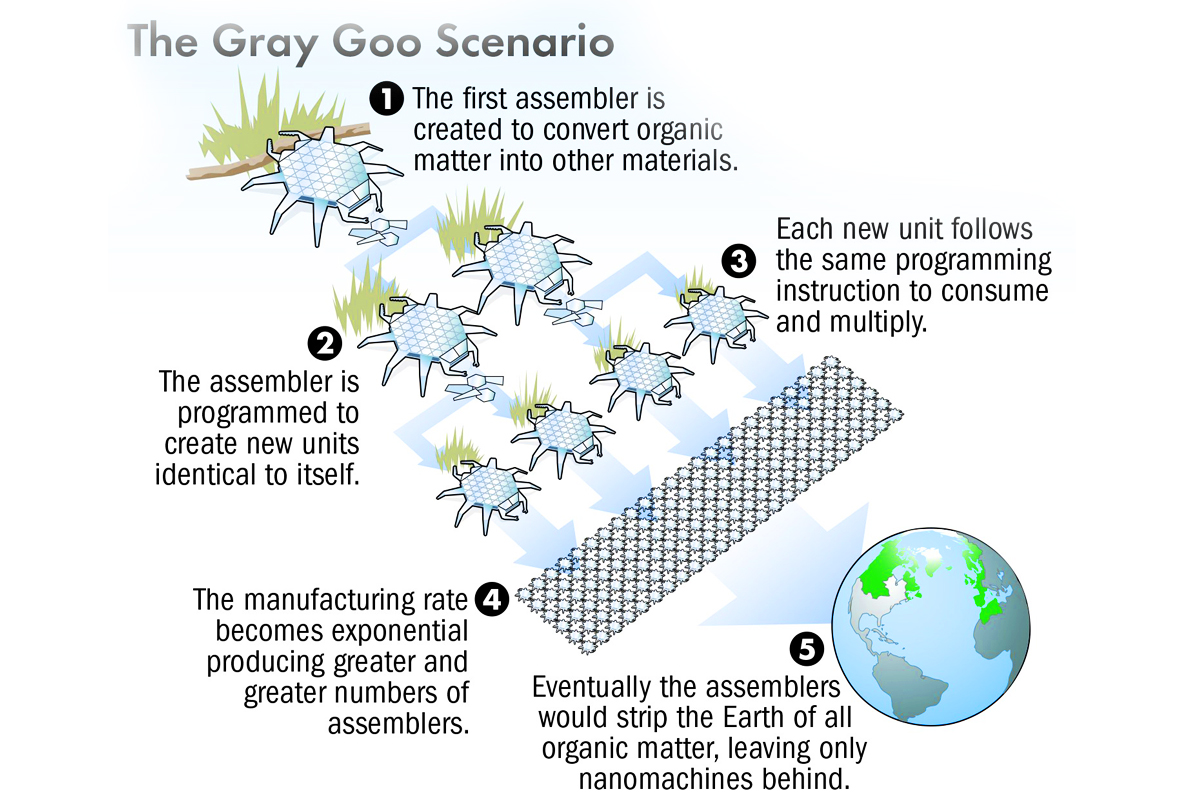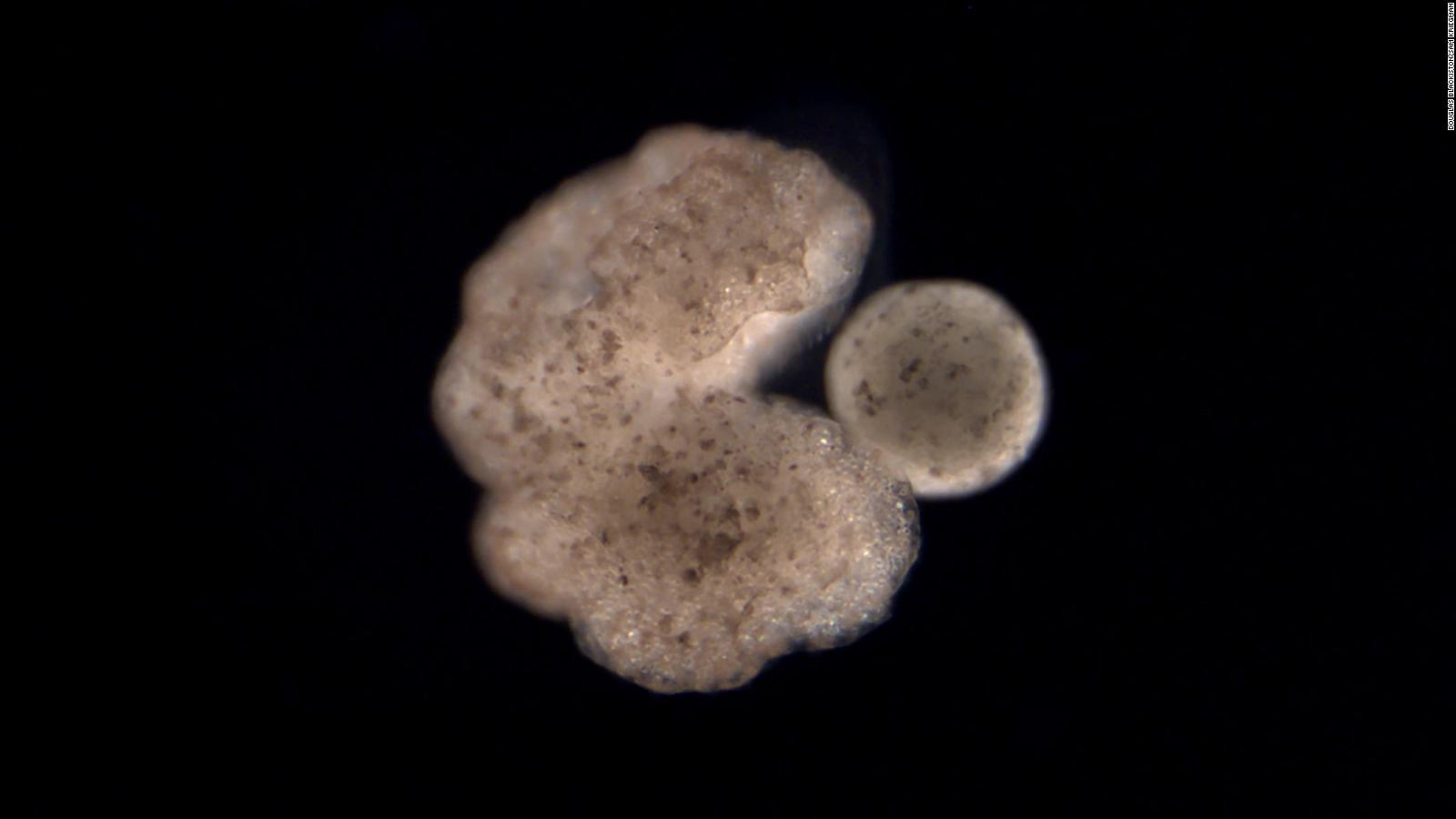Scientists from the Universities of Vermont, Tufts and Harvard have discovered a new form of biological reproduction and used it to create self-replicating living robots, as reported in a new study.
Made from frog cells, these computer-designed robots gather single cells inside a “mouth” like Pac Man and release xenobot “baby” clones that look and behave like themselves. This process is then repeated by the offspring, and so on – with the potential to continue indefinitely.
The research has the potential to be used in radical new medical treatments, but is also likely to raise fears of robotic apocalypse too.
Self-replicating living robots: science fact in 2021
The team that built these new self-replicating robots had already designed the first living robots, called xenobots, using frog cells in 2020.
Now they have discovered that these computer-designed and hand-made organisms can swim out into their medium, find single cells, gather hundreds of them together, and assemble “baby” versions of themselves inside their Pac-Man-shaped “mouth”.
Just a few days later, these babies then become “fully grown” xenobots that can then do the same themselves.
This process can potentially be repeated ad infinitum, if the conditions are correct.
“With the right design — they will spontaneously self-replicate,” says Joshua Bongard, Ph.D., a computer scientist and robotics expert at the University of Vermont who co-led the new research.
“These are frog cells replicating in a way that is very different from how frogs do it. No animal or plant known to science replicates in this way,” according to Sam Kriegman, Ph.D., the lead author on the new study.
On its own, the Xenobot parent, made of around 3,000 frog cells, forms a sphere.
“These can make children but then the system normally dies out after that. It’s very hard, actually, to get the system to keep reproducing,” says Kriegman.
However, by using an artificial intelligence program working on the Deep Green supercomputer cluster at UVM’s Vermont Advanced Computing Core, an evolutionary algorithm was able to test billions of body shapes in simulation to find ones that allowed the cells to be more effective at the motion-based “kinematic” replication reported in the new research.
“We asked the supercomputer at UVM to figure out how to adjust the shape of the initial parents, and the AI came up with some strange designs after months of chugging away, including one that resembled Pac-Man,” says Kriegman.
“It’s very non-intuitive. It looks very simple, but it’s not something a human engineer would come up with. Why one tiny mouth? Why not five? We sent the results to Doug and he built these Pac-Man-shaped parent Xenobots. Then those parents built children, who built grandchildren, who built great-grandchildren, who built great-great-grandchildren.” In other words, the right design greatly extended the number of generations.”
Although kinematic replication is commonly seen at the level of molecules, it had never been observed before at the level of cells or organisms.
“We’ve discovered that there is this previously unknown space within organisms, or living systems, and it’s a vast space,” says Bongard. “How do we then go about exploring that space? We found Xenobots that walk. We found Xenobots that swim. And now, in this study, we’ve found Xenobots that kinematically replicate. What else is out there?”
Self-replicating living robots: potential applications

The researchers are clear that the believe this new technology should not be feared.
The potential issues surrounding the use of these new tiny robots, “are not what keep me awake at night. What presents risk is the next pandemic; accelerating ecosystem damage from pollution; intensifying threats from climate change,” says Bongard.
“This is an ideal system in which to study self-replicating systems. We have a moral imperative to understand the conditions under which we can control it, direct it, douse it, exaggerate it.”
Bongard points to the COVID epidemic and the hunt for a vaccine, which he believes could have been sped up by this new technology.
“The speed at which we can produce solutions matters deeply. If we can develop technologies, learning from Xenobots, where we can quickly tell the AI: ‘We need a biological tool that does X and Y and suppresses Z,’ — that could be very beneficial. Today, that takes an exceedingly long time.”
“We need to create technological solutions that grow at the same rate as the challenges we face.”
The technology could be used in a number of ways, “like deploying living machines to pull microplastics out of waterways or build new medicines.”
Advanced regenerative medicine is also another potential application, the team claim.
“If we knew how to tell collections of cells to do what we wanted them to do, ultimately, that’s regenerative medicine — that’s the solution to traumatic injury, birth defects, cancer, and aging,” says Levin.
“All of these different problems are here because we don’t know how to predict and control what groups of cells are going to build. Xenobots are a new platform for teaching us.”
For others, though, such assurances are likely to fall on less receptive or even deaf ears. The threat of self-replicating robots spinning out of control is now a well-established trope in fiction, such as Michael Crichton’s 2003 novel Prey.
Such fiction often involves a so-called “grey goo” scenario, in which self-replicating machines continue to replicate indefinitely, harvesting all the available matter in the environment until all that remains is the machines themselves.

Don’t hesitate to email us at [email protected] for personalized coaching and a client questionnaire if you’d like DEDICATED tailor-made personal training on strength training, building muscle, losing fat, developing athleticism, and more — all to your liking, lifestyle, habits, and taste!
Otherwise, don’t forget to claim your FREE eBook detailing how to lose 20lb of fat while building muscle in 12 weeks! You can claim it here.
Alternatively, you can pick up a FREE eBook on fundamental strength principles offering an introductory workout program.











